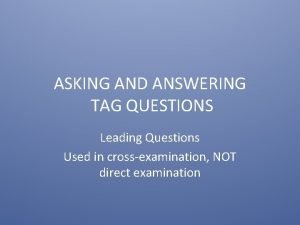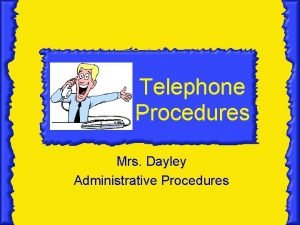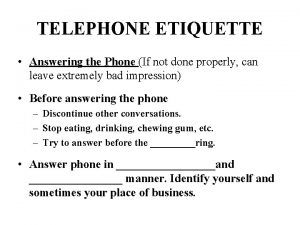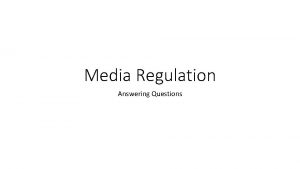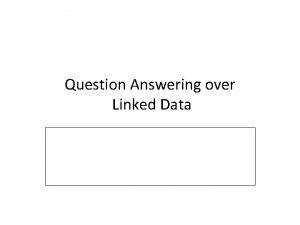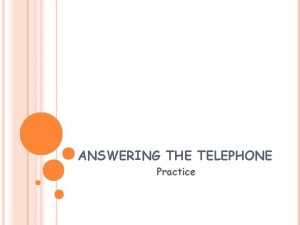ANSWERING POLICY QUESTIONS Welcome to Answering Policy Questions












- Slides: 12

ANSWERING POLICY QUESTIONS

Welcome to Answering Policy Questions! Once you have articulated your company’s policies, the customer will often have questions and possibly objections. Handling these questions properly gives you the opportunity to further build the customer relationship. This lesson expands on the practice from lesson one to include common policy questions and concerns. Benefits: • Better customer relationships • Less frustration • Fewer customer service escalations

Course Objectives Skills developed: • The ability to answer policy questions in a way that strengthens the customer relationship. Communication Target: Answer at least 3 policy questions for each of 3 company policies, using the 3 step method, while maintaining the following standards: – show empathy – remain neutral – keep an even, professional tone.

Be Prepared for Questions A clear explanation will help your customers to understand operate within your company’s policies with less frustration. However, even with the clearest explanation, there will still be some customers that will have questions, and some may feel that a policy does not apply to them for one reason or another.

Know Your Policies Knowing the “hows & whys” of your policies is the first step to being able to answer questions in a way to help your customers understand how the policies affect them and help your company maintain consistent service standards for all your customers.

Watch Your Body Language It is important to remain positive and friendly, and always treat your customer with respect while answering their questions, or addressing their policy concerns. • Remain Neutral, keep your tone even and professional • Smile, when appropriate • LISTEN to the customer’s question/concern and ask additional questions if you need to clarify their question. (more on this topic in the Active Listening lesson) • Maintain eye contact as much as possible. • Show empathy for the customer’s situation and a true desire to help them understand. • The customer should always feel valued, never de-valued or embarrassed.

Acknowledge, Answer, Ask Use the 3 A’s to move the conversation forward We will use a simple 3 step method to move the conversation forward. • Acknowledge • Answer • Ask

Acknowledge the questions with a statement like “That’s a great question”, or “I understand your concern. I can clarify that for you. ” The goal is to normalize the customer’s question and help them feel at ease.

Answer • Answer the question as clearly and simply as possible. • Remember to watch your body language as you engage with your customer.

Ask • Ask a follow up question such as, “Did I answer your question? ” or “Is there anything else, I can clarify for you? ” • This will give the customer the opportunity to ask any additional questions to their understanding or confirm that they understand the policy clearly.

Preparing for the In-Class Session: • Be prepared to answer questions about the 3 policies from your worksheet. • Be prepared to give feedback to other members. Before coming to The Gym: • Download and complete the worksheet and bring it with you to the practice session.

Practice Regimen • Practice answering your policy questions several times a day. • Review your answers to see if you can cut anything out and still be just as clear. • Remember to keep answers short and clear and end with a question.
 Present continuous tense ka hindi
Present continuous tense ka hindi Economics chapter 3 section 1 answer key
Economics chapter 3 section 1 answer key Answering questions in spanish
Answering questions in spanish Chapter 2 section 1 answering the three economic questions
Chapter 2 section 1 answering the three economic questions Answering tag questions
Answering tag questions Chapter 2 section 1 answering the three economic questions
Chapter 2 section 1 answering the three economic questions Answering the three economic questions section 1 quiz
Answering the three economic questions section 1 quiz Welcome welcome this is our christmas story
Welcome welcome this is our christmas story Telephone answering procedures
Telephone answering procedures Telephone answering etiquette in business
Telephone answering etiquette in business Sas answering service
Sas answering service Answering
Answering Naysayer essay examples
Naysayer essay examples




